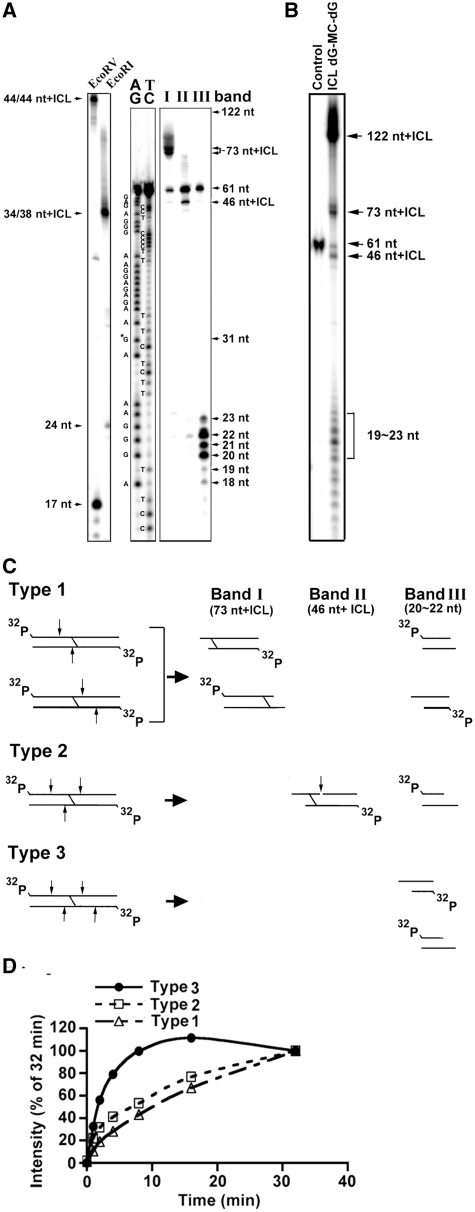Figure 4.
Identification of the products resulting from UvrABC incision of the 61-bp DNA fragments containing an ICL dG-MC-dG–DNA adduct. (A) The three major bands (I, II and III) as shown in Figure 3 were extracted and separated by electrophoresis in a 12% polyacrylamide denaturing gel as described in Figure 2. Note: the DNA fragments in band I resulted in a band corresponding to size of ∼73 nt + ICL, the DNA fragments in band II resulted in a band corresponding size of ∼46 nt + ICL, and the DNA fragments in band III resulted a band of size ∼22-nt bands. The size standards were generated using the 61– bp DNA fragment containing an ICL dG-MC-dG adduct cut with EcoRI or EcoRV. The 61-nt band results from an unreacted 61-mer contamination during the strand construction. AG and TC represent Maxam and Gilbert sequencing reaction products (42). (B) 32P-labeled 61-bp DNA fragments containing an ICL dG-MC-dG DNA adduct were incubated with UvrABC for 32 min and the resultant DNAs were separated by electrophoresis the same as in (A). (C) The three possible types (1, 2 and 3) of UvrABC incision on the double-stranded 61-bp fragments containing a site-specific ICL dG-MC-dG DNA adduct that would result in generating fragments of the following approximate sizes: 73 nt + ICL, 46 nt + ICL and 22 nt. The arrows indicate the UvrABC cutting sites. For clarity, only the major incision positions are shown. It should be noted that type 1, 2 and 3 incisions resulted in producing DSB. (D) The kinetics of the three types of UvrABC cutting on the ICL dG-MC-dG lesion. The calculations were based on the band intensity shown in Figure 3B and the cutting models presented in Figure 4C.

